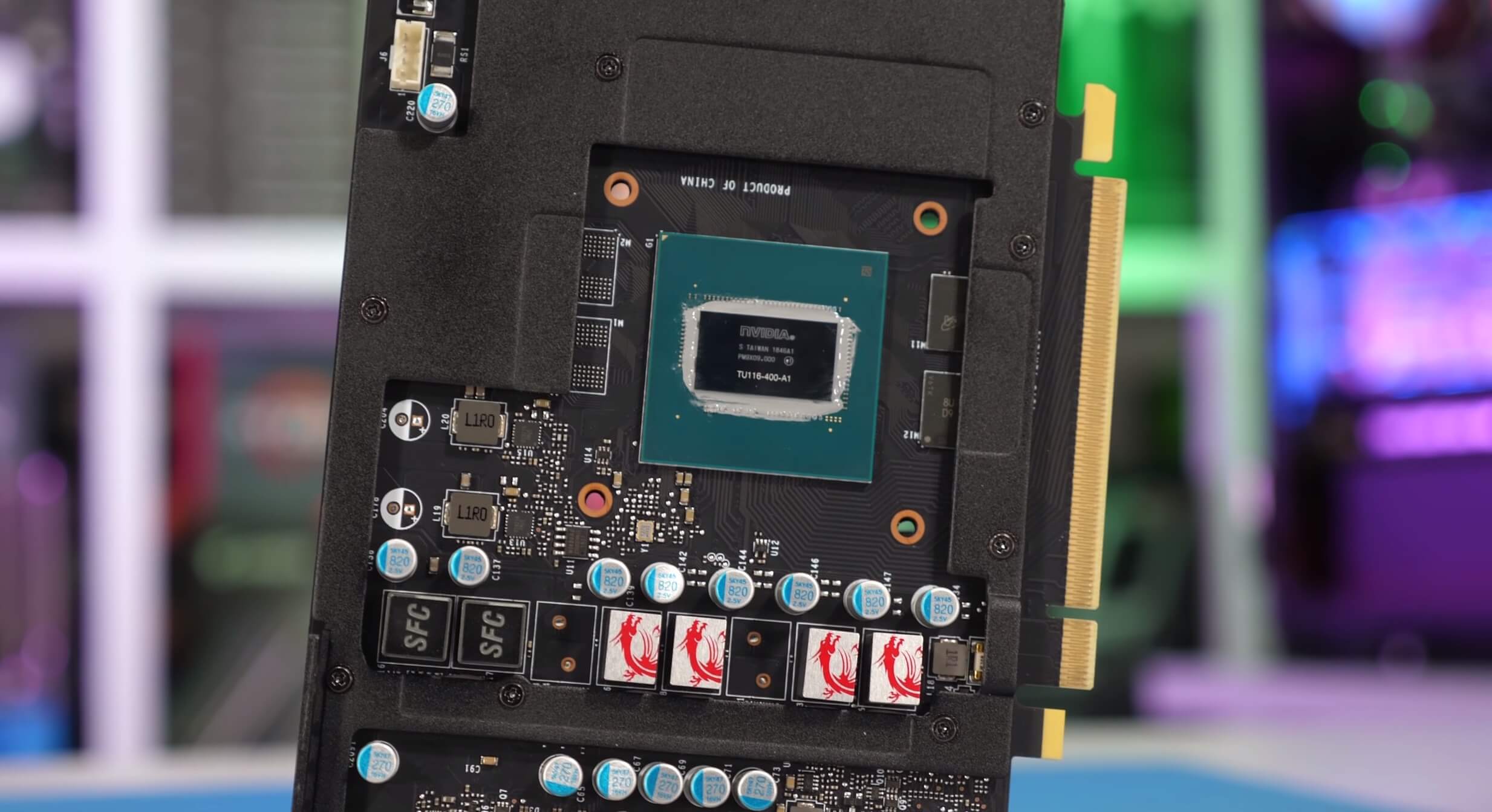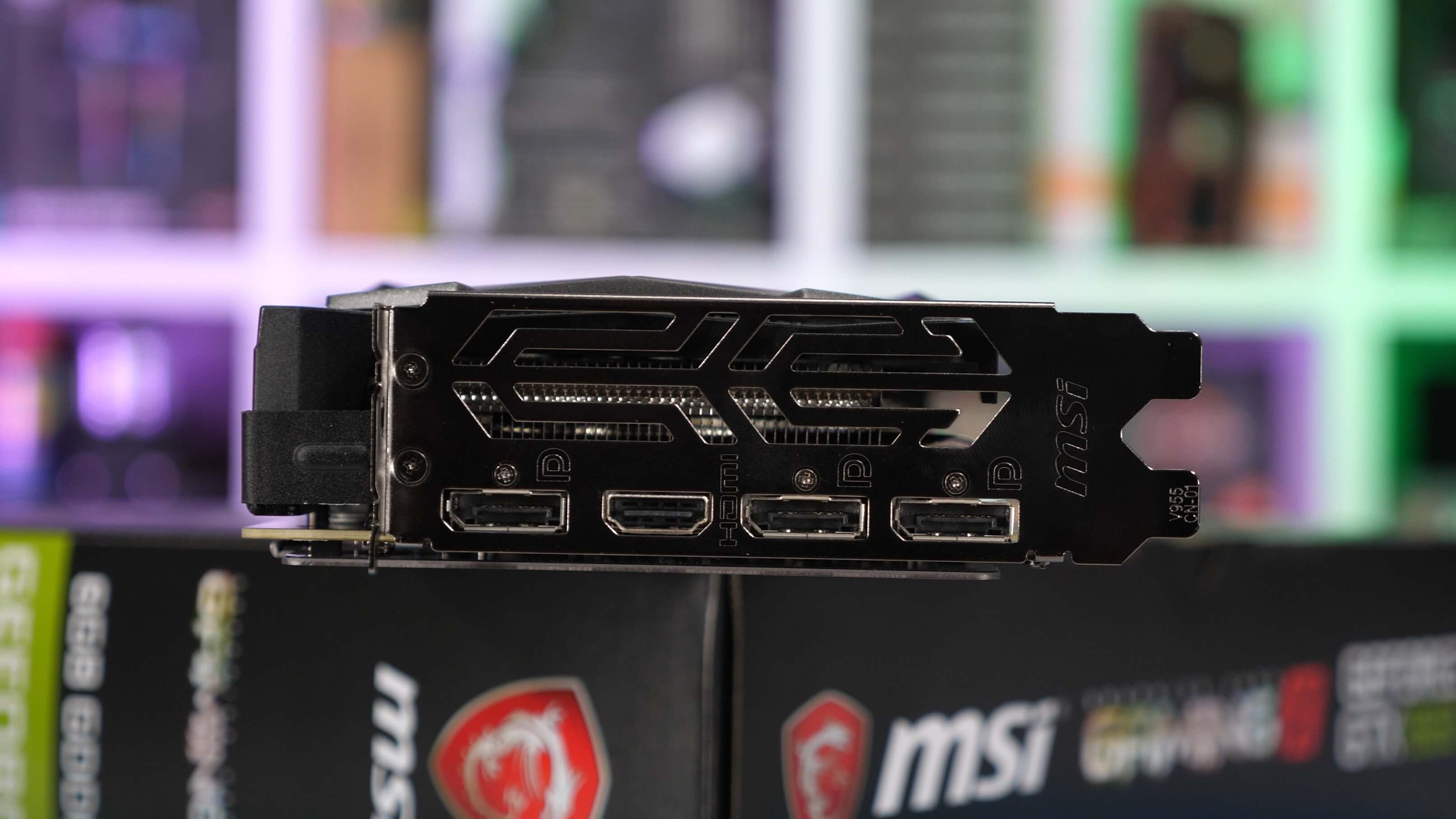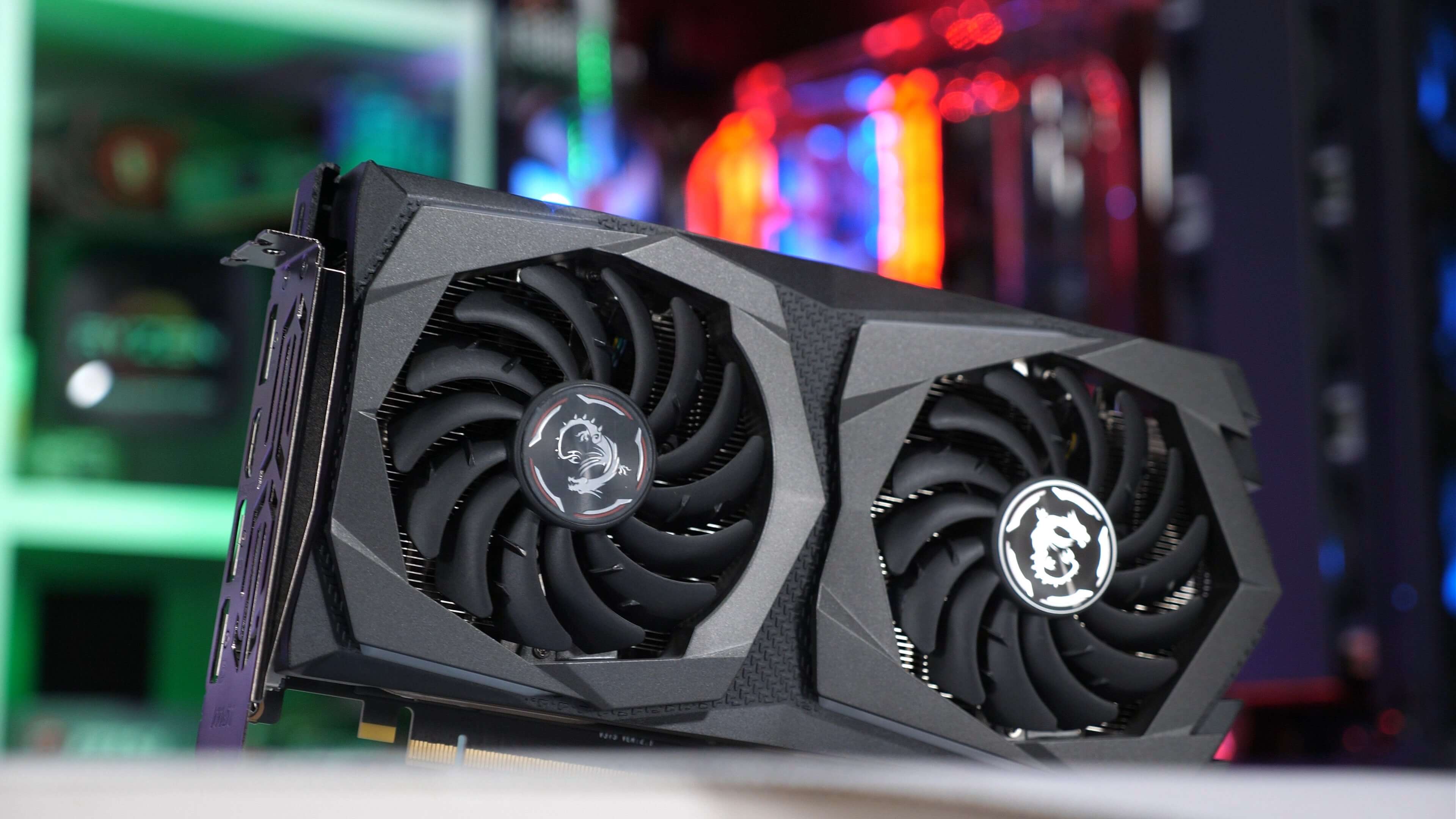As we had anticipated, we are following up to our GeForce GTX 1660 Ti review with an even more ample 33 game benchmark test. The day-one review looked at a dozen of the more recently released games such as Resident Evil 2, Metro Exodus, Apex Legends, and many others.
We were keen to see how the 1660 Ti stacked up in a much wider range of games, so today we're doing that. The performance summary and breakdown section includes the 12 games we already looked at along with the new 21 titles, and for 12 of those 21 titles we'll analyze and comment the results more closely below.
We completed all testing in the same test bed comprised of a Core i9-9900K clocked at 5 GHz with 32GB of DDR4-3200 memory. As for drivers we used Adrenalin 2019 Edition 19.2.2 for the Radeon GPUs and Game Ready 418.91 WHQL for the GeForce GPUs.
Benchmarks
First up we have Assassin's Creed: Odyssey and despite being an AMD sponsored title it does prefer Nvidia hardware and we see that here as the GTX 1660 Ti is able to match Vega 64. It was also 42% faster than the RX 590. When compared to other GeForce parts it matched the GTX 1070 and was just 11% slower than the RTX 2060.

Next up we have Strange Brigade, another AMD sponsored title. This time it plays nice with AMD hardware which makes better sense. Interestingly, whereas the RTX 2070 is a good bit faster than the GTX 1080, the GTX 1660 Ti is actually a little slower than the GTX 1070. Still overall performance at 1440p was good and the new affordable Turing GPU also edged out the RX 590.

In Star Wars Battlefront II the GTX 1660 Ti demonstrates how it's clearly a class ahead of the GTX 1060 6GB and RX 590, offering over 40% more performance. In this title we're looking at GTX 1070 or Vega 56-like performance with a healthy 68 fps on average.
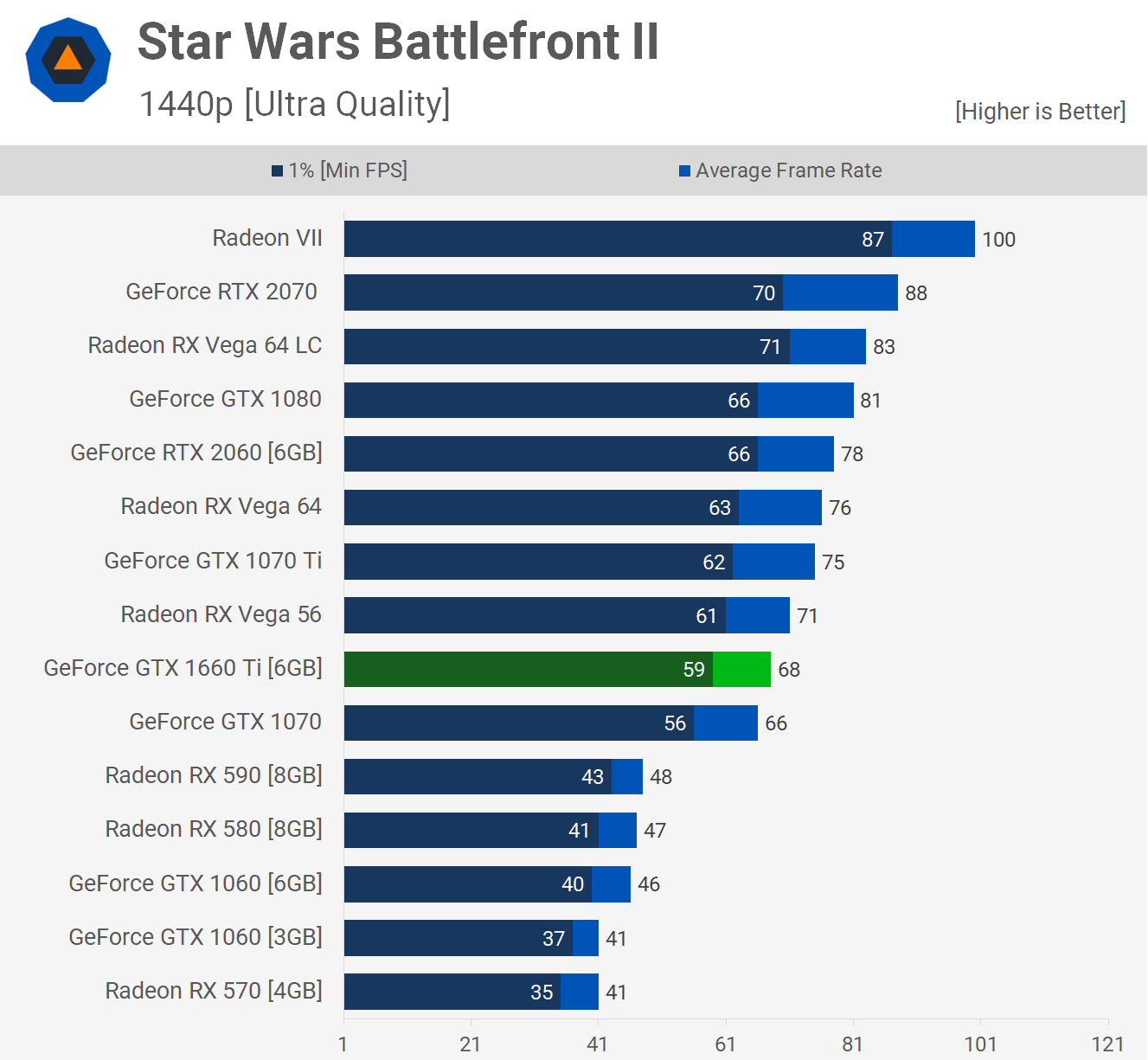
DiRT 4 using CMAA is an AMD special, but even so the GTX 1660 Ti was able to match the RX 590, providing the same experience. The 1660 Ti also roughly matched the GTX 1070 Ti and was just 5% slower than the GTX 1080.
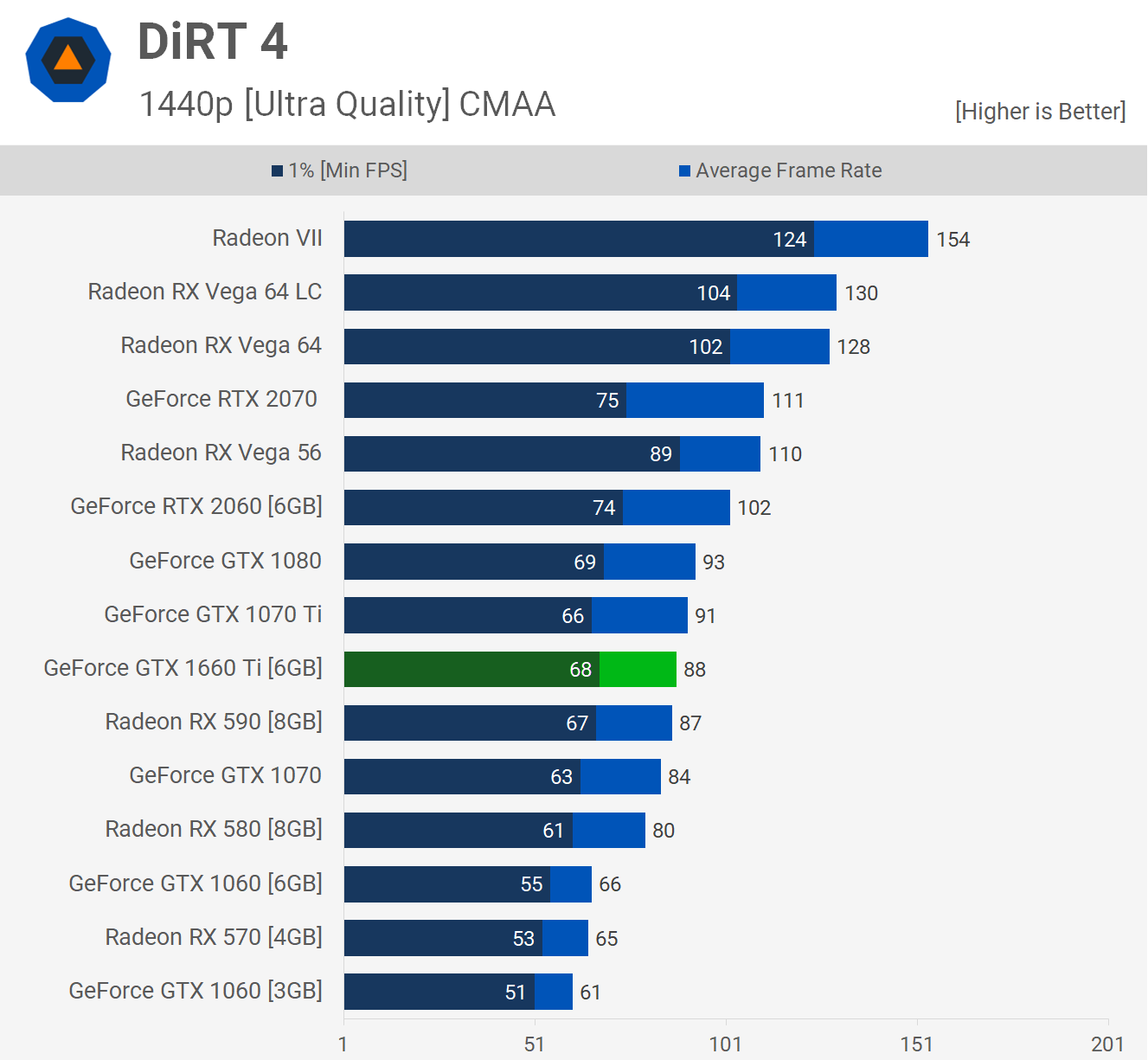
Next we have For Honor, here we see the GTX 1660 Ti creeping in just behind the GTX 1070, which meant it was also a few frames down on Vega 56. Even so it was still almost 30% faster than the RX 590 and GTX 1060 6GB.

Sniper Elite 4 is one of the few games that supports DirectX 12 and actually runs better using DX12. That said, the GTX 1660 Ti did trail the GTX 1070 by a small margin in this one. It was also 12% slower than Vega 56. While not a bad result, it wasn't the card's best showing either.
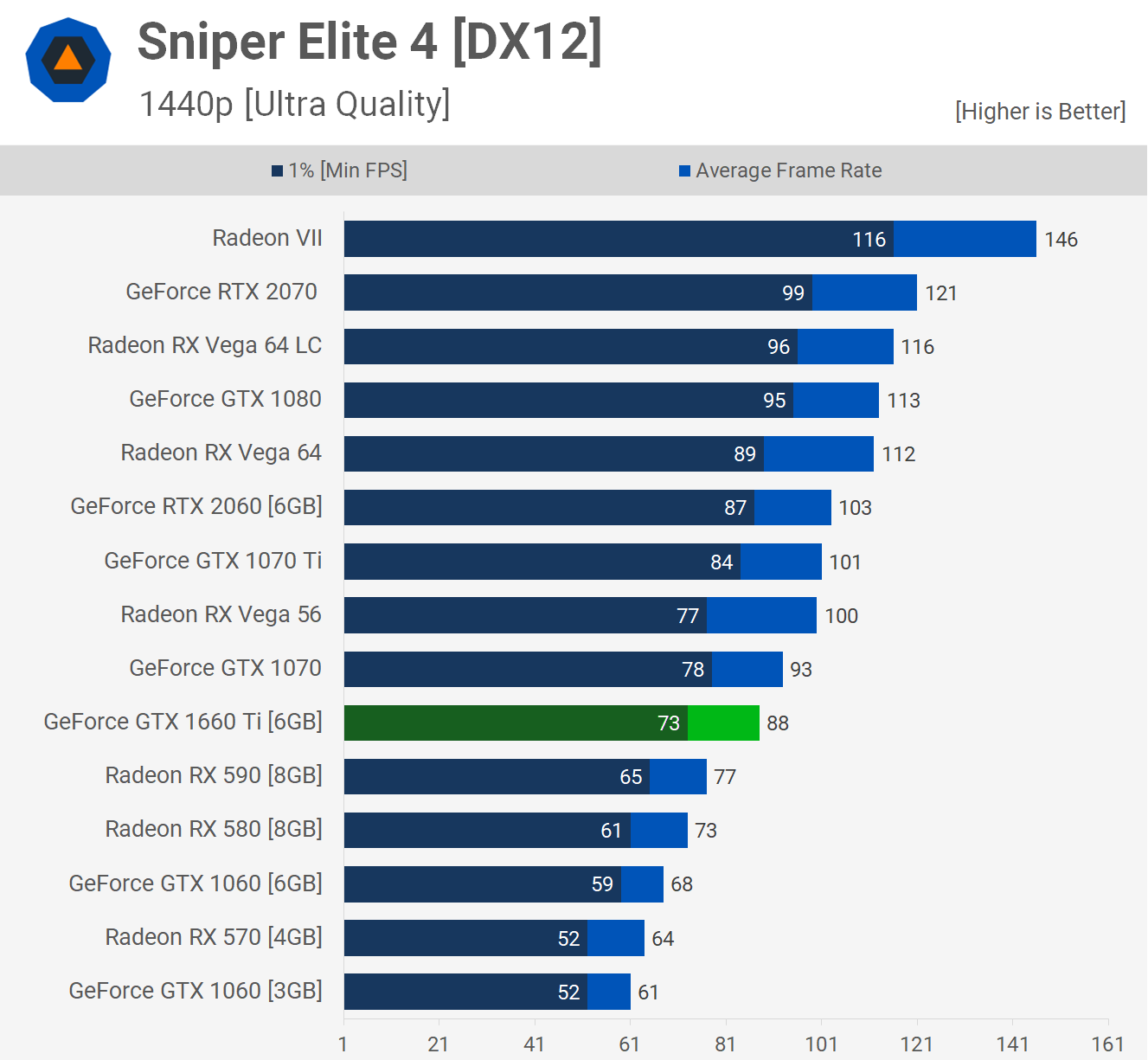
In The Witcher 3 the 1660 Ti matches the GTX 1070 as it often does. The GPU also matched Vega 56 and was 26% faster than the Radeon RX 590, but most crucially with the game's visual settings just about maxed out it provided a very playable 54 fps on average at 1440p. This enabled a much better experience than either the RX 590 or 6GB GTX 1060.
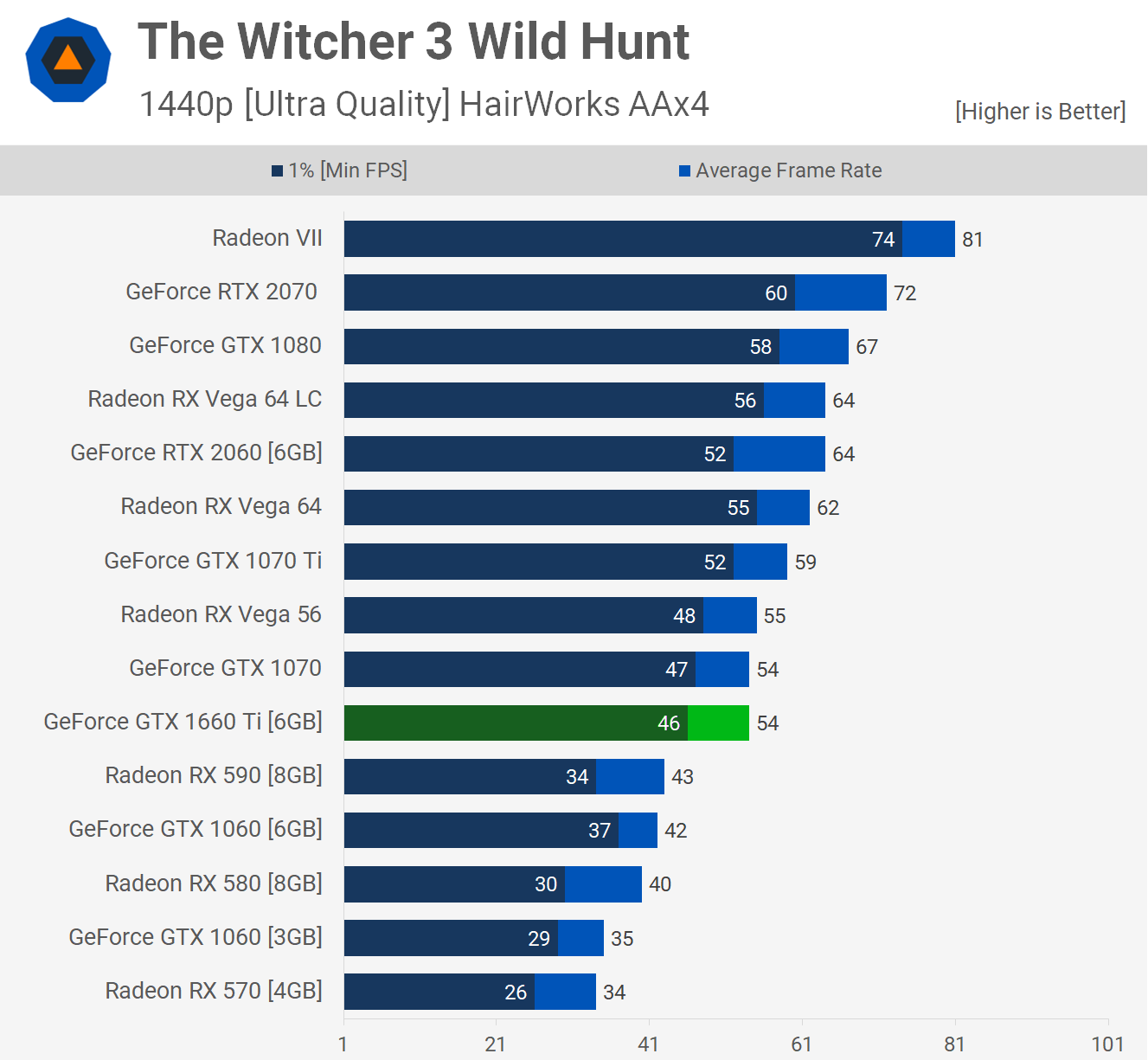
F1 fans will appreciate what the GTX 1660 Ti has to offer for less than $300. You're looking at performance somewhere between a GTX 1070 and 1070 Ti. The Radeon GPUs perform very well in this title, too, but even so the 1660 Ti dusted the RX 590 by a 23% margin.

Testing with Warhammer Vermintide 2 sees the GTX 1660 Ti match Vega 56, and please note we're using the DirectX 11 API for testing. A few Vega users complained that we were favoring Nvidia by using DX11, that's not the intention but last we checked DX11 offered better frame time performance. We plan to retest these GPUs with DX12 just to make sure. Plus, in case those Vega owners didn't get the memo, Turing is pretty handy in DX12 and Vulkan titles now anyway.
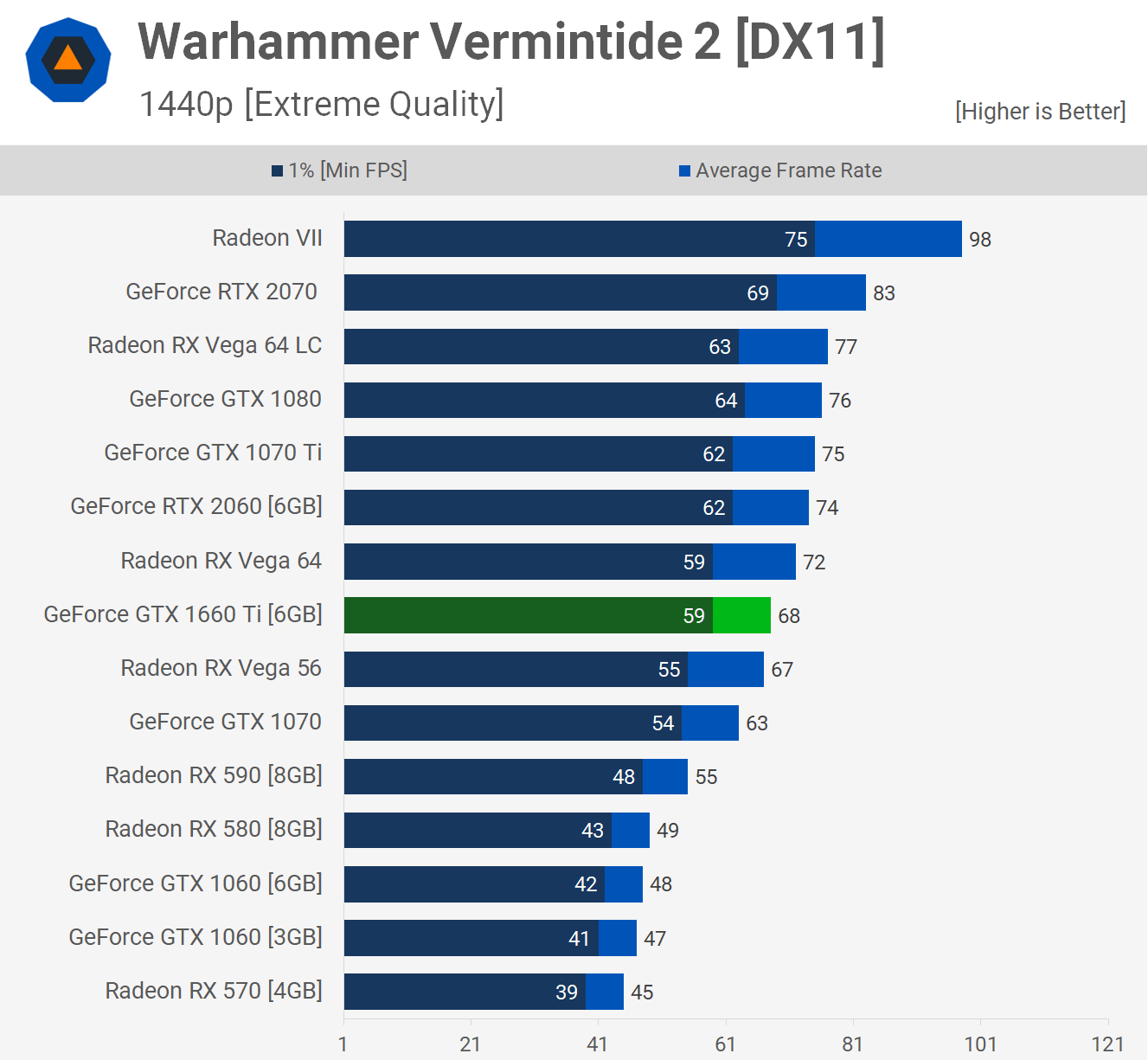
Performance in Prey is a little down on what you might be expecting from the GTX 1660 Ti, though with 86 fps on average it was still well ahead of the RX 590 and GTX 1060 6GB. The 1% low result was very solid, too, though it lagged behind the 1070 by a 9% margin which was a little surprising.
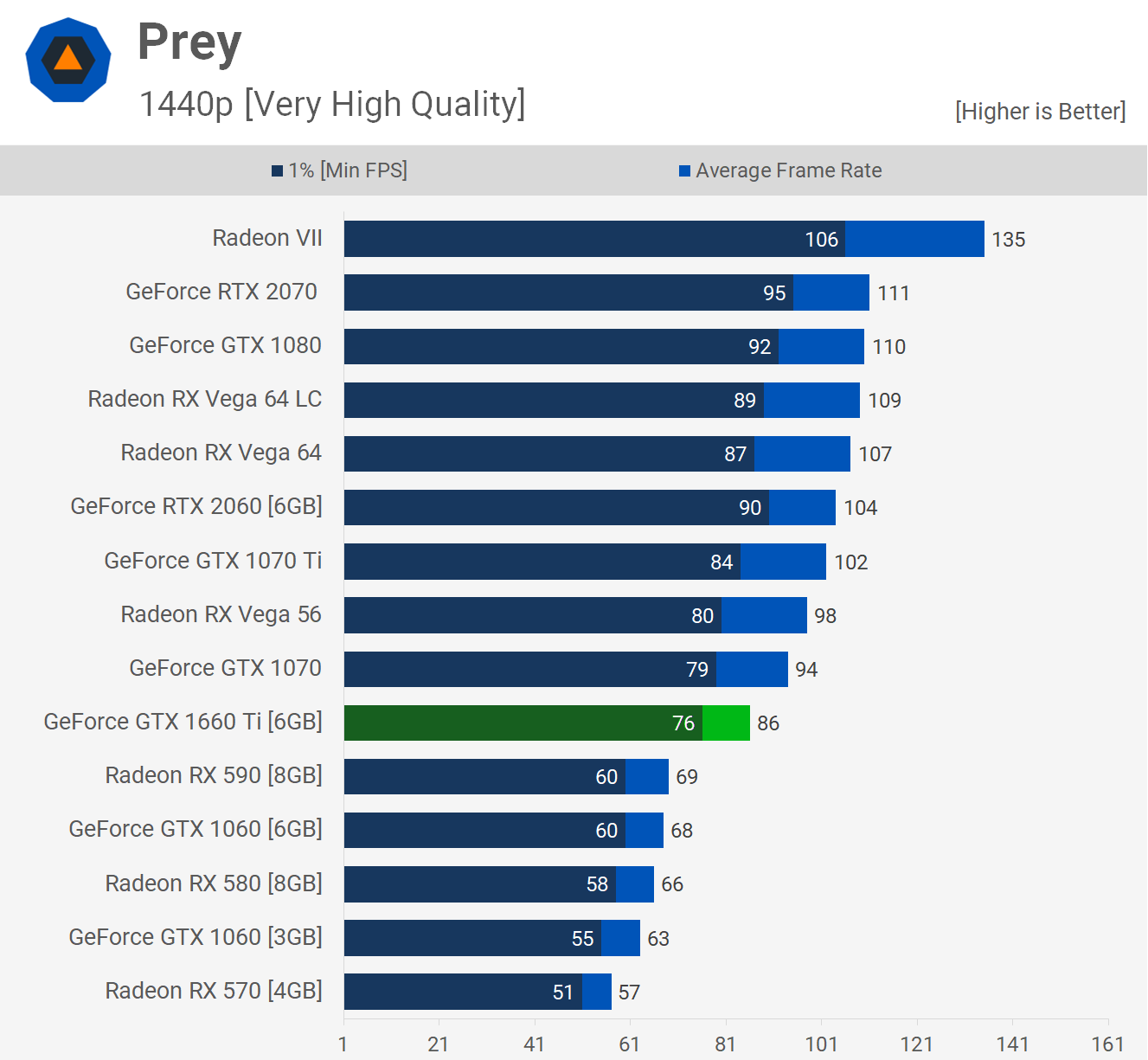
Kingdom Come Deliverance has the 1660 Ti sitting between the 1070 and 1070 Ti, making this new mid-range GPU ~14-15% slower than the more expensive RTX 2060 and Vega 56. It also wasn't that much faster than the RX 590... well, it was 22% faster, but given we've seen it up around 40% at times, a 22% margin looks modest in this instance.
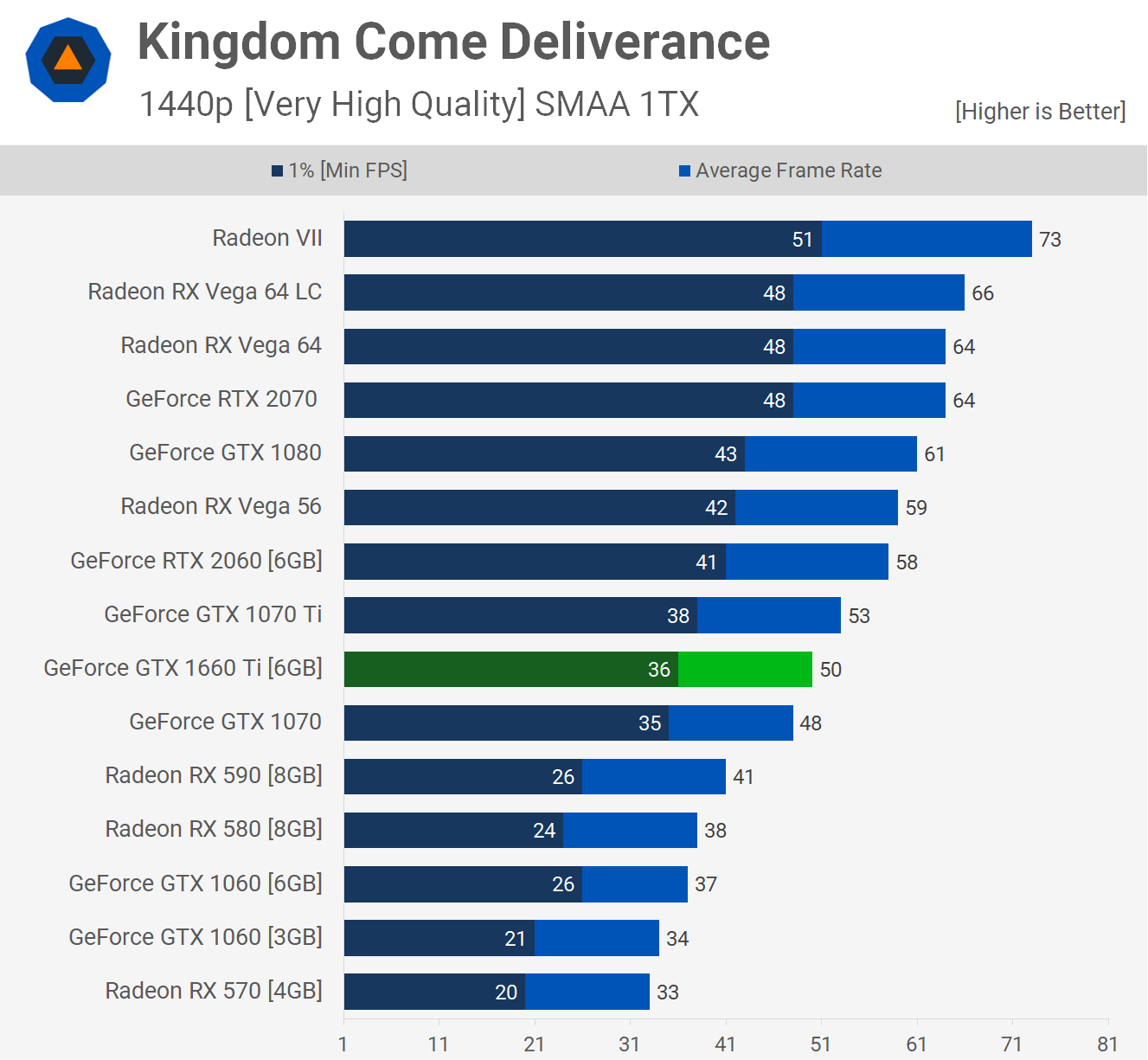
We've already seen how Warframe runs better with Pascal GPUs. For example, the GTX 1080 is 8% faster than the RTX 2070. Here the GTX 1070 was 16% faster than the 1660 Ti, in fact, the new budget Turing offering was only 9% faster than the GTX 1060 6GB, so a fairly disappointing result to end on for fans of Warframe.
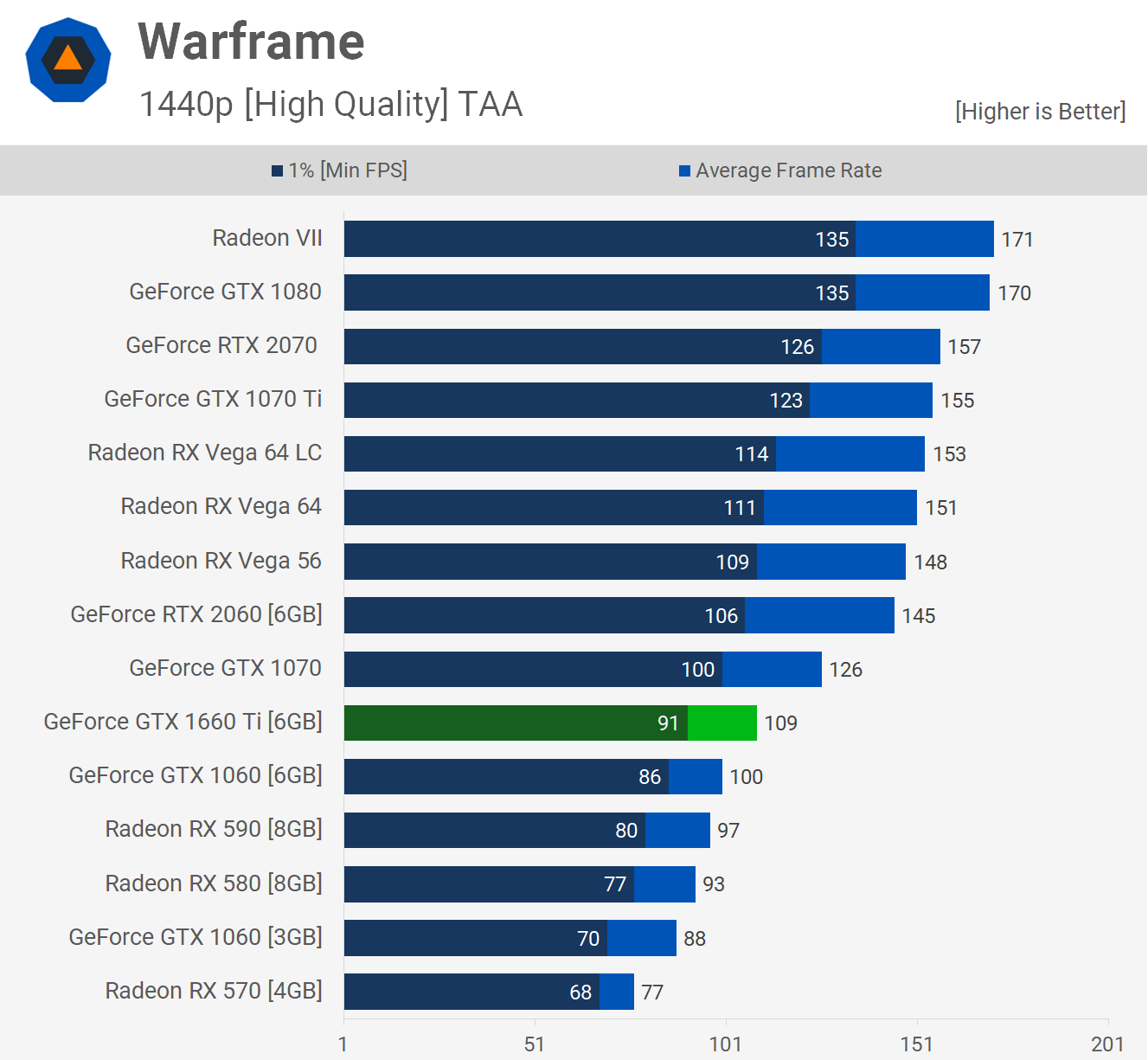
Performance Summary
GTX 1660 Ti vs. GTX 1060
In our day-one review the GTX 1660 Ti came out 40% faster on average when compared to the GTX 1060 6GB at 1440p. That figure has dropped quite a bit in the 33 game comparison, now the 1660 Ti is just 34% faster, though still a decent margin.
The reason for this is down to the more limited game selection that purely by chance were more favorable to the Turing GPU. The focus was on new titles such as Shadow of the Tomb Raider, Apex Legends, Resident Evil 2 and Hitman 2, all of which heavily favored the 1660 Ti.
However now we have included games such as Warframe, Shadow of War and half a dozen other titles that saw the 1660 Ti beat the 1060 by less than 30%, bringing that average down and making the GTX 1660 Ti 34% faster on average against the GTX 1060 6G, which in itself is not a bad result given it costs just 12% more.
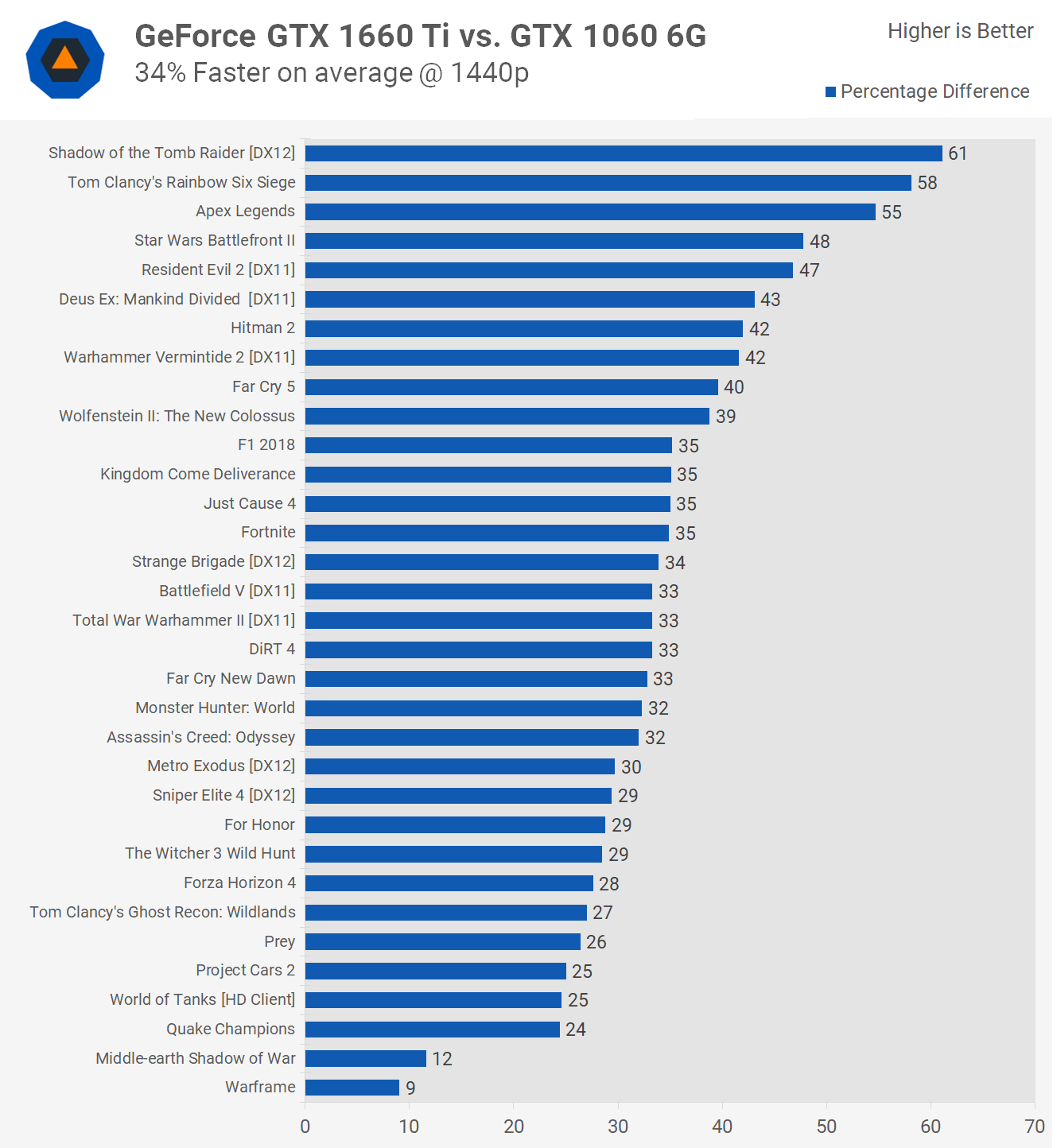
GTX 1660 Ti vs. GTX 1070
In our day-one coverage the 1660 Ti was ~2% faster on average against the GTX 1070 and because of that we noted performance to be basically the same overall. Now in our 33 game test the 1660 Ti came out exactly level with the 1070. This graph gives us a good idea of where Turing is more efficient than Pascal and, of course, Turing is faster under all conditions. It's just that in this case we're pitting a 1920 CUDA core Pascal part against a 1536 CUDA core Turing part.
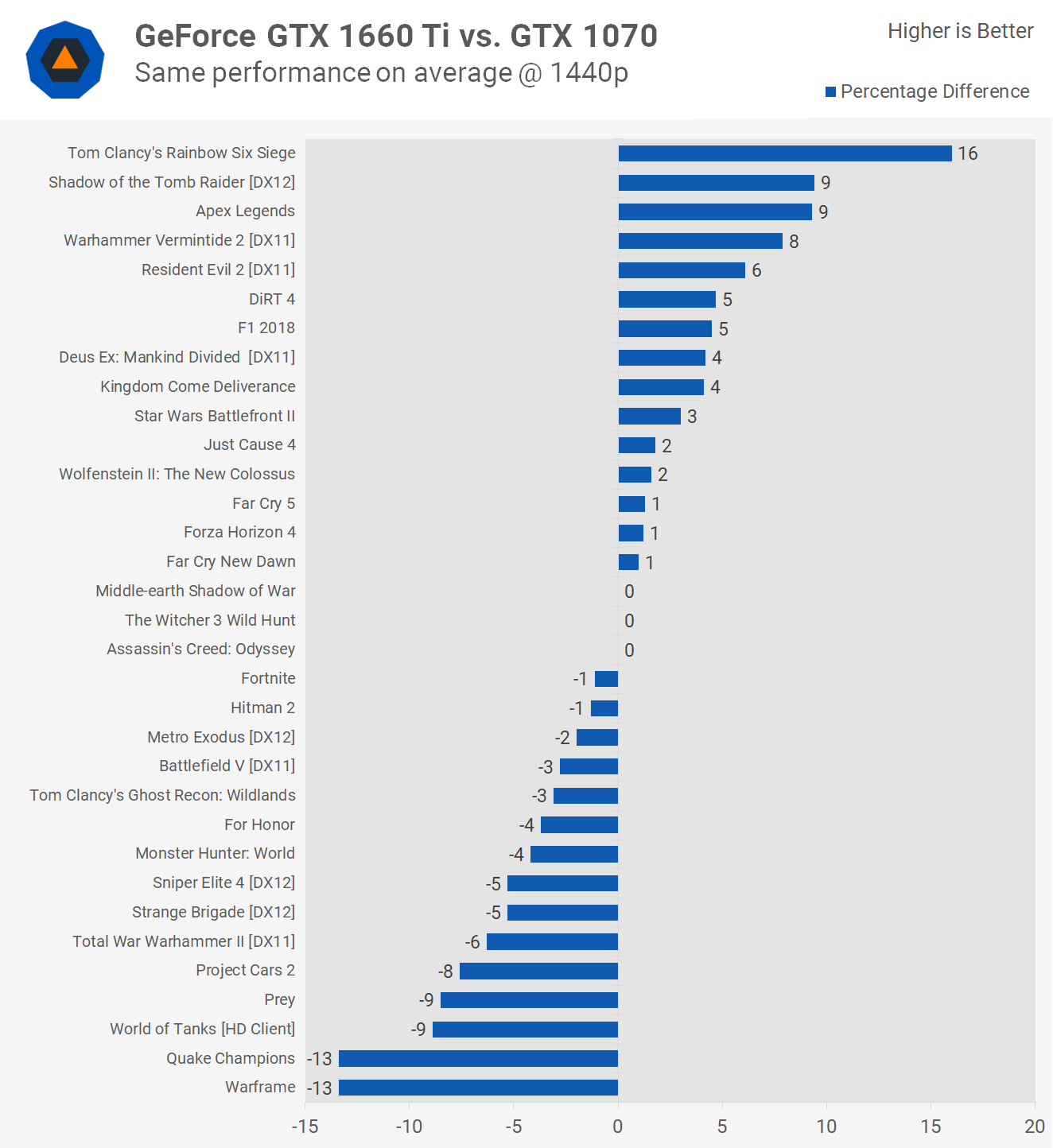
GTX 1660 Ti vs. RTX 2060
For the RTX 2060 comparison we see similar margins to our original review. Previously the 1660 Ti was 12% slower, now with 33 games that margin is increased ever so slightly to 14%. We've got to retest Forza Horizon 4 to try and work out what's going on there, but other than that the only other major outliers include Warframe, Metro Exodus and World of Tanks.
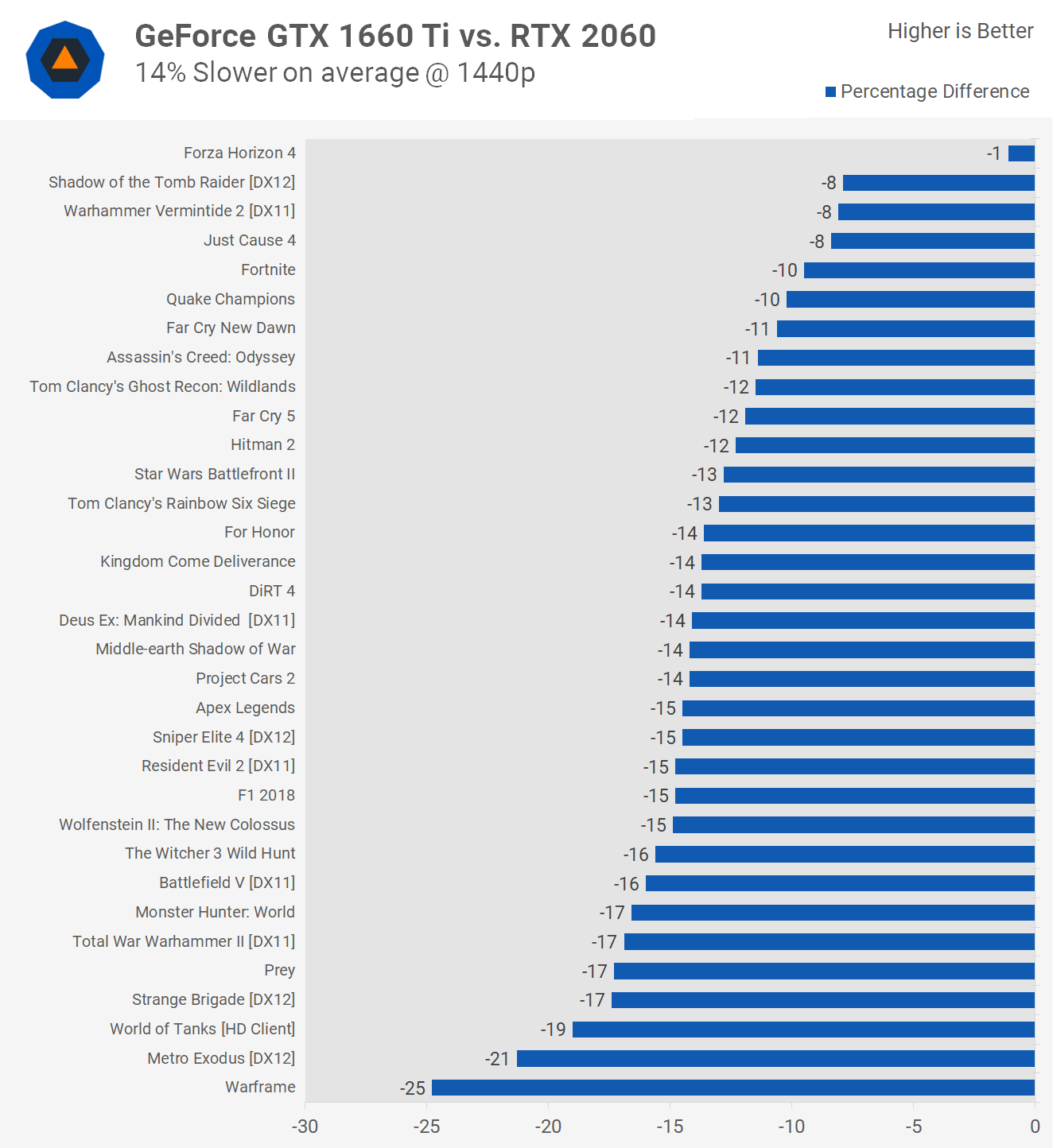
GTX 1660 Ti vs. Radeon RX 590
The performance margin remains the same for the Radeon RX 590 comparison.
The 1660 Ti is 24% faster here.
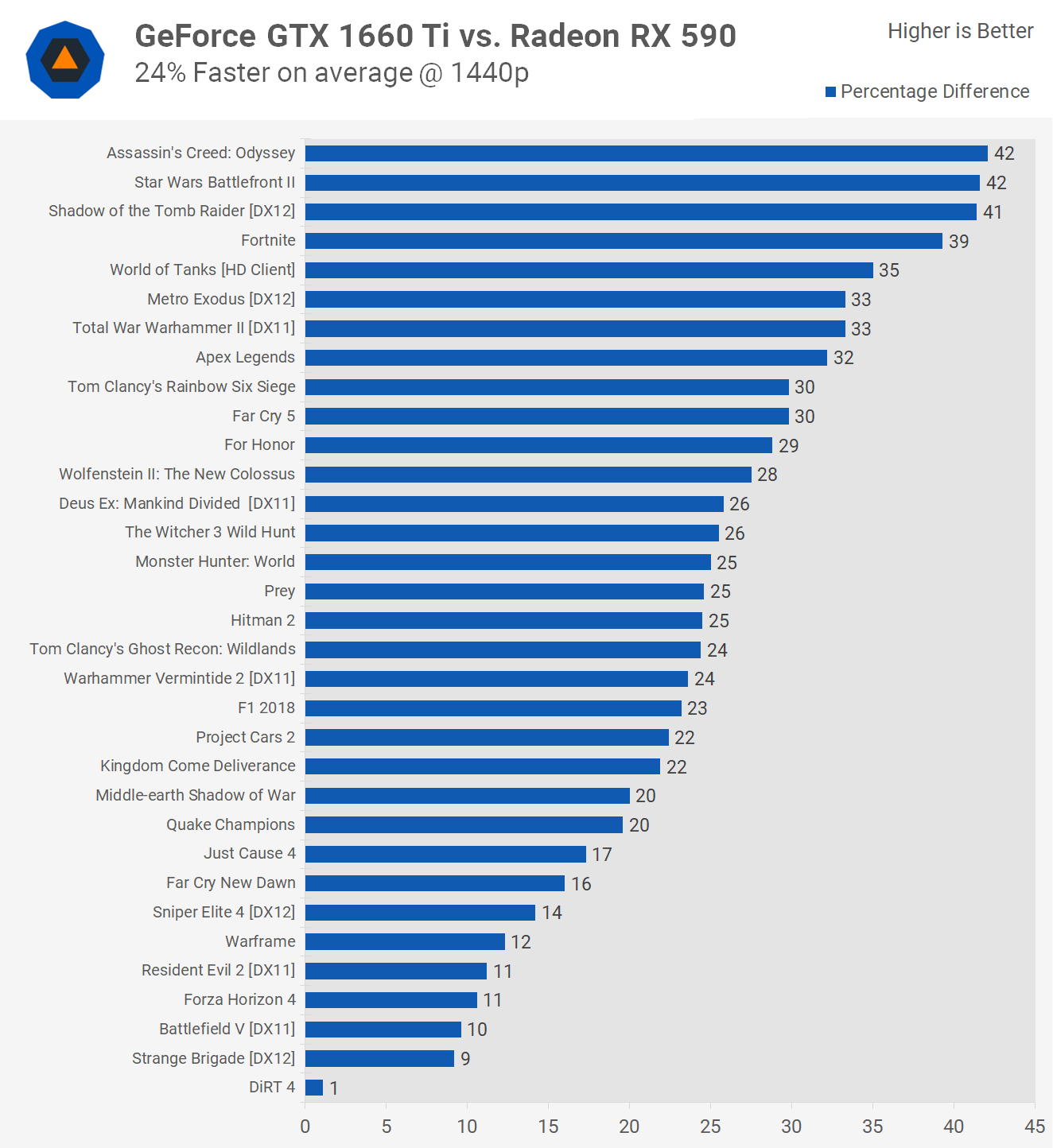
GTX 1660 Ti vs. Vega 56
When put against the Radeon Vega 56, the GTX 1660 Ti is 8% slower on average, though with more titles at hand we see a few examples where the GTX 1660 Ti was significantly slower: Warframe, Strange Brigade, Battlefield V, DiRT 4 and Resident Evil 2, for example. Meanwhile, the GTX 1660 Ti was slightly faster or a match for Vega 56 in Assassin's Creed Odyssey, Fortnite, Vermintide 2 and Apex Legends.
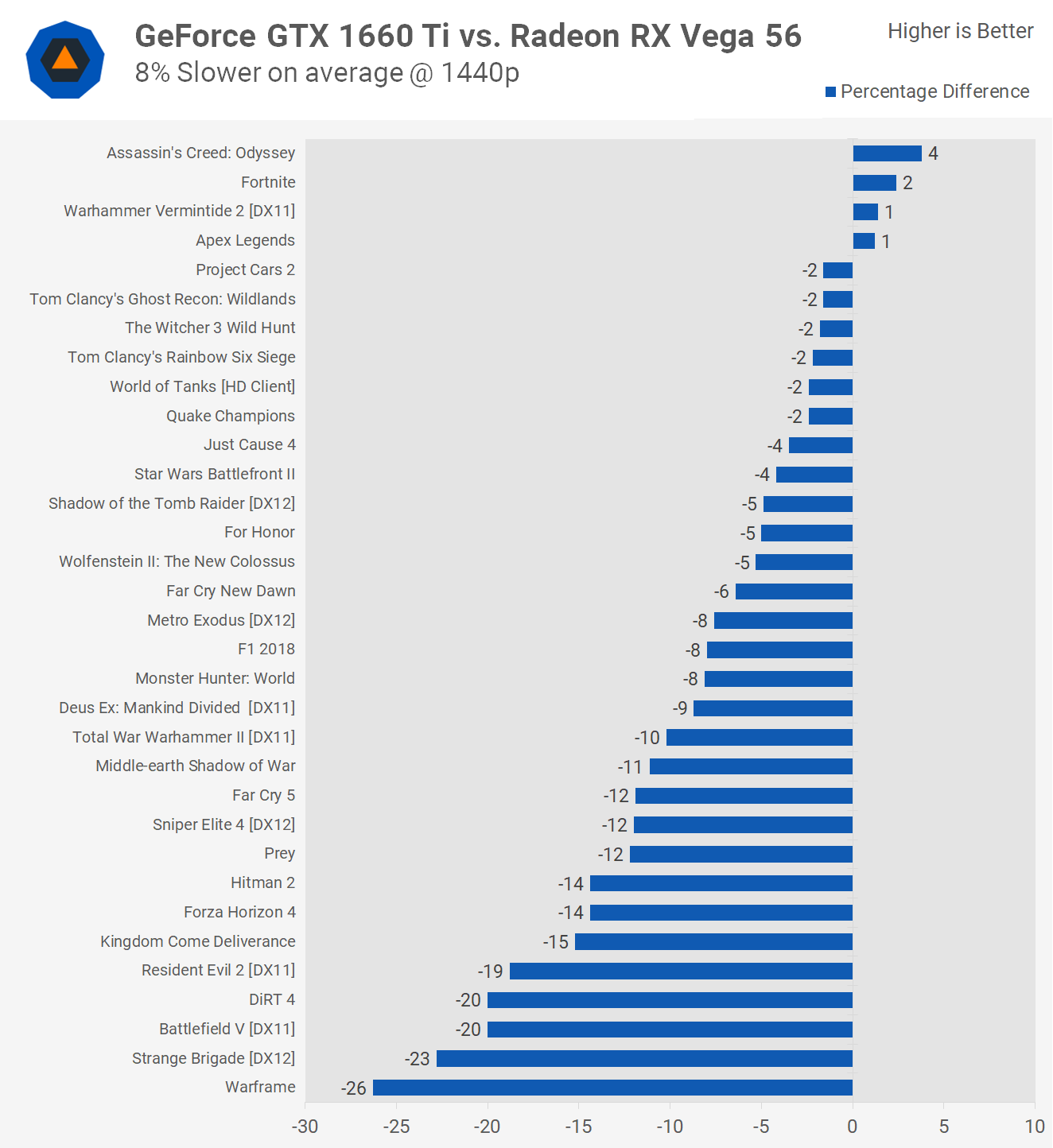
Cost per Frame and Closing Thoughts
A quick update to our cost per frame graph. If you read our GTX 1660 Ti review from days prior, the change here is very small at ~2-4 fps for the most part. Only the Radeon VII saw a significant change in the 33 game sample, and here it stacks up much better than on the previous 12-game comparison. But for the purpose of this article, we're not interested in Radeon VII, rather Vega 56, RX 590 and RX 580 play more consequential roles in this comparison.
Overall little has changed... the GTX 1660 Ti is only 9% more expensive than the RX 580 per frame, but 12% cheaper than the RX 590 and 22% cheaper than Vega 56, at the more typical $400 asking price. Then compared to the RTX 2060, the cost per frame of the 1660 Ti is improved by 7%, so a solid result for the new GTX graphics card.

That's how the GeForce GTX 1660 Ti stacks up in a wide range of games and it was interesting to see where it offered big gains over GPUs such as the GTX 1060 6GB, and then others where the gains were less impressive.
Although the GTX 1660 Ti looks less appealing for GTX 1060 6GB owners in this massive benchmark comparison, a 34% performance boost on average is still nothing to scoff at. If we were currently gaming with a GTX 1060 and were after something with a bit more punch, upgrading to a GTX 1660 Ti is worthy of consideration. The new GPU does offer next tier performance for a small price premium. Of course, if you have anything faster than a GTX 1060 or RX 580, such as Vega 56 or the GTX 1070, there's still no worthwhile upgrade choice if you want best value for your money.
For those coming from much older mid-range GPUs, your top choices are either the GTX 1660 Ti or Vega 56. The RX 590 simply isn't fast enough for the price, though we are finally starting to see some changes with some models dropping as low as $240, which does nudge closer in terms of cost per frame. Still, for that level of performance you're usually better off with the Radeon RX 580. We don't expect a true GTX 1660 Ti competitor from AMD until Navi drops.
There are currently a number of 1660 Ti graphics cards available at the $280 MSRP.
Zotac with their Gaming model, MSI has the Zentus, EVGA has the XC Black, Gigabyte is offering a base model OC card as well as a Mini-ITX version. So it'd appear getting a decent model for the MSRP is not an issue. We really like the look of the MSI Ventus and we'll try to get our hands on one very soon. As it stands today, the GTX 1660 Ti has no competition for best value and overall package for the price.
